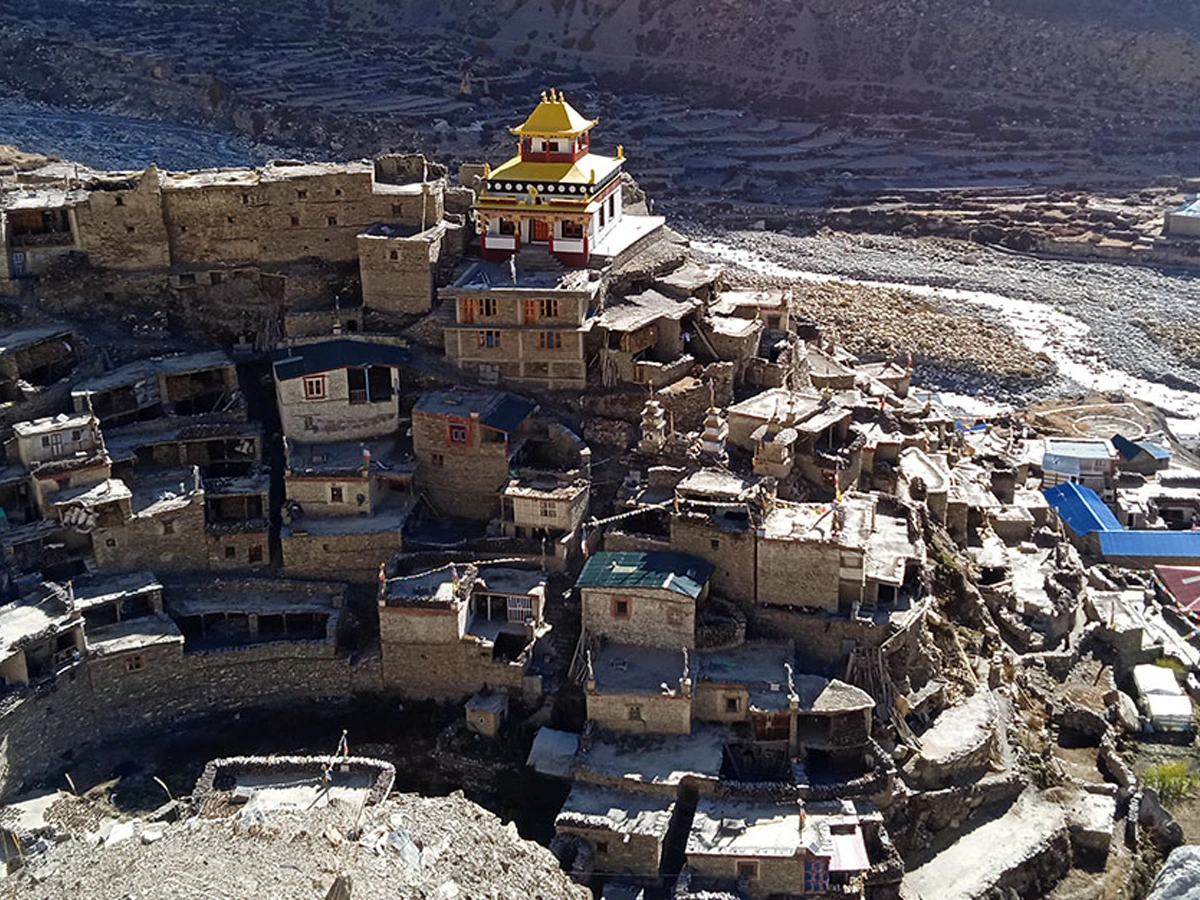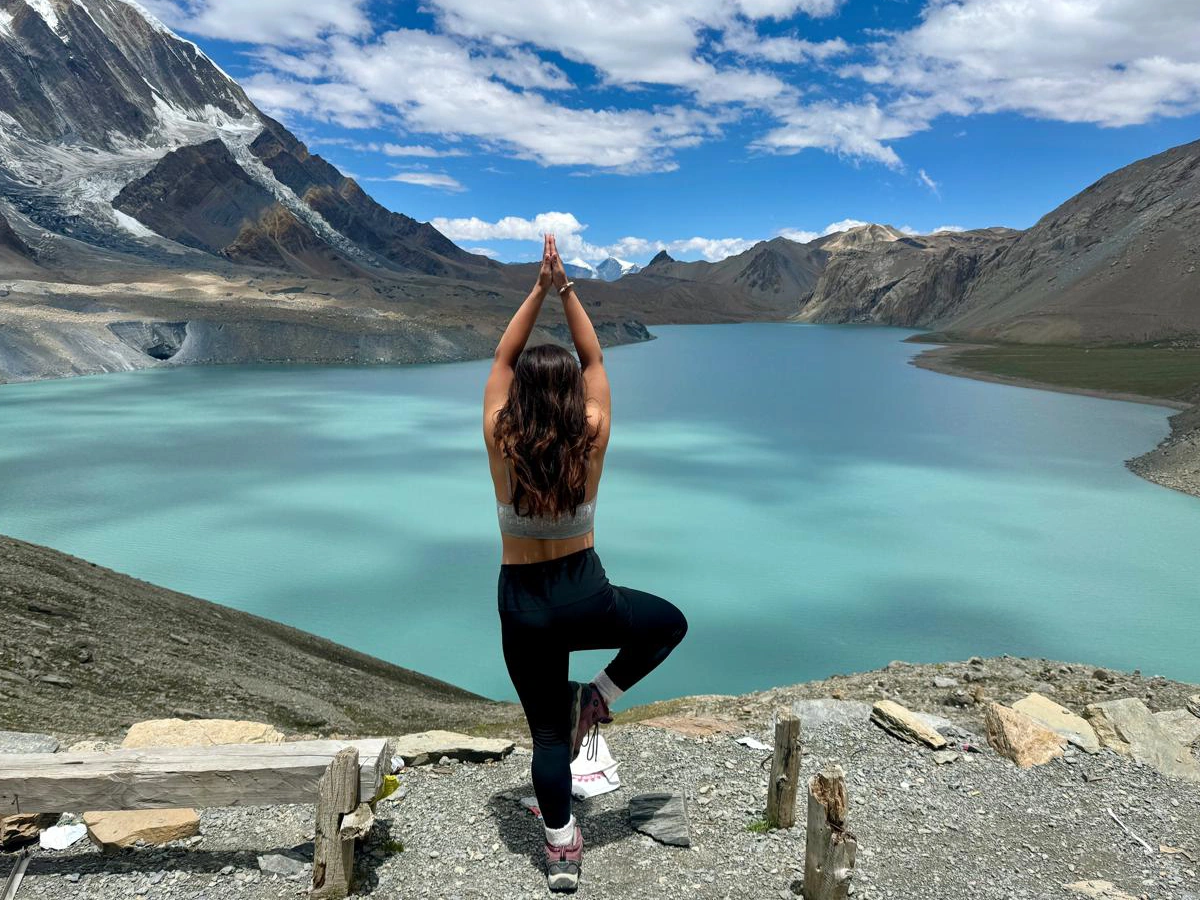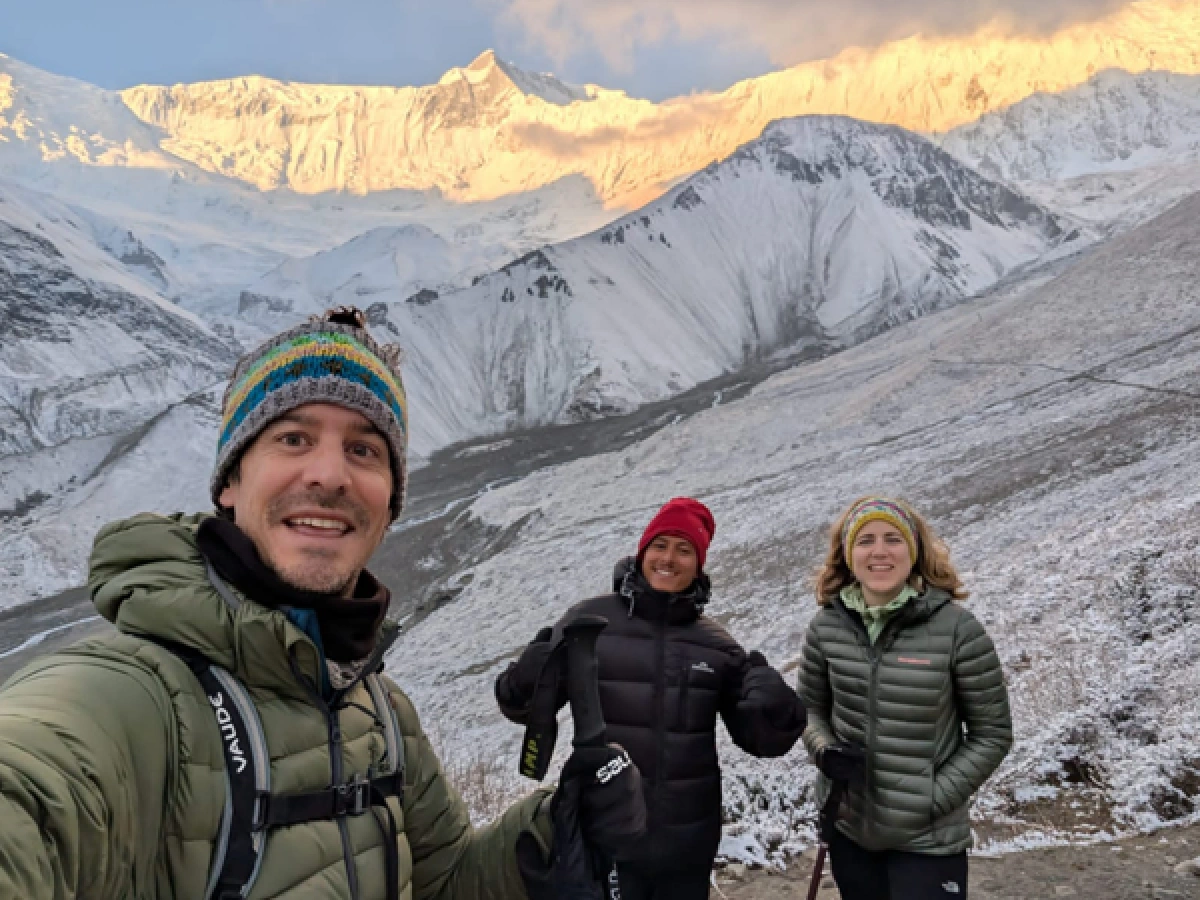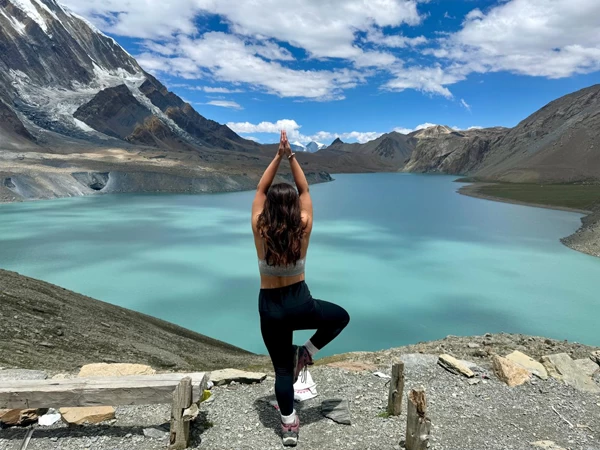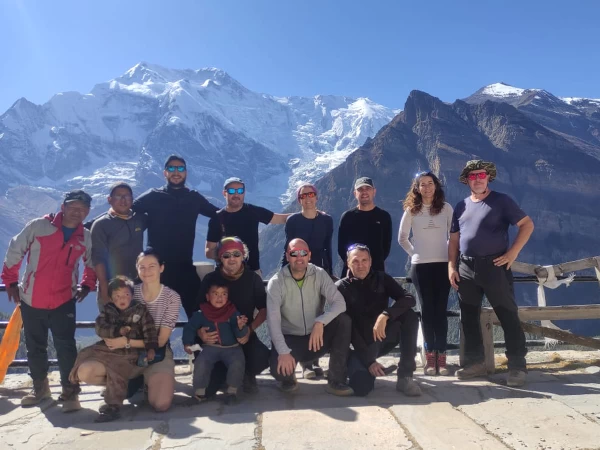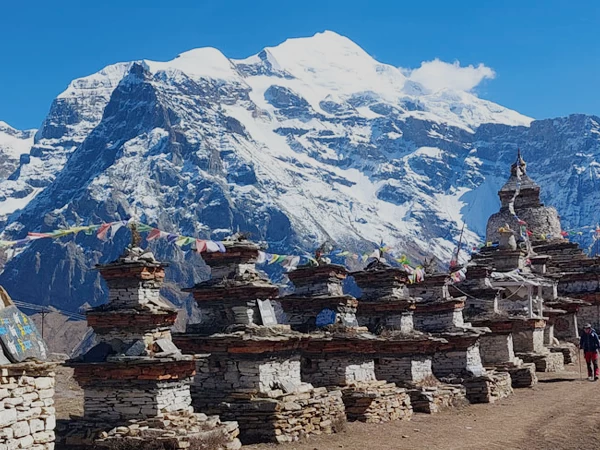Permits Required for Narphu Valley Trekking with Annapurna Circuit & Tilicho Lake
Trekking in Nepal's Nar Phu Valley with Annapurna Circuit & Tilicho Lake requires specific permits due to its status as a restricted area. Here's what you need:
- Restricted Area Permit from Immigration: This permit is mandatory for all trekkers. Solo trekking is prohibited in restricted trekking areas of Nepal including Nar Phu - minimum 2 pax is required; accompained by licensed guide & permits can only by issued by registered trekking agency in Nepal. The cost varies by season: September to November: USD 100 for the first 7 days, plus USD 15 per additional day & December to August: USD 75 for the first 7 days, plus USD 15 per additional day.
- Annapurna Conservation Area Permit (ACAP): Required as the trek passes through the Annapurna Conservation Area. The cost is NPR 3,000 (approximately USD 25 - 30) for foreign nationals.
- Trekkers' Information Management System (TIMS) Card: Not mandatory for the Nar Phu Valley trek unless you plan to merge it with the Annapurna Circuit trek. If required, the cost is NPR 2,000 (approximately USD 17) for non-SAARC nationals.
Note: The TIMS (Trekkers' Information Management System) card is no longer required for treks in the Everest region as per the latest rules. All permits must be obtained through a registered trekking agency in Nepal. Solo trekkers are not permitted to obtain these permits independently.
At Asian Adventure Treks & Expedition, we take care of all the necessary permits for you. Our team arranges everything in advance, and your guide will carry the documents to ensure smooth passage through all checkpoints.
When is the Best Time for Narphu Valley Trek with Annapurna Circuit & Tilicho in Nepal?
You can do the Narphu Valley Trek with Annapurna Circuit & Tilicho Lake - 23 Days, in most months of the year, but some seasons offer better weather and views. Here's a simple guide to help you choose the best time:
- Spring (March to May): One of the best seasons for this trek. The weather is warm and stable, skies are clear, and the rhododendron forests are in full bloom. You’ll get great mountain views and pleasant trekking conditions. It's also a popular time, so the trail may be a bit busy.
- Autumn (Mid-September to November): Another ideal season with clear skies, dry trails, and mild temperatures. The mountain views are amazing, and you may also enjoy local festivals like Dashain and Tihar. It’s a very popular time, so booking in advance is recommended.
- Monsoon (June to Mid-September): It is possible to do the trek in Monsoon - rainy season as well since the vehicle goes to Dharapani and above that point since there is road trial the trials are not muddy and slipperly also there is no chance of leeches on the way. The landscapes are lush and green, and there are fewer trekkers on the trail. It's suitable for those who don’t mind little rain and want a peaceful experience.
Meals & Accomodation during 12 days - Nar Phu Valley Trek in Nepal
Throughout the Narphu Valley Trek with Annapurna Circuit & Tilicho in Nepal for 23 days, trekkers stay in simple teahouses or lodges that offer basic facilities and a unique opportunity to experience life in remote Himalayan villages.
- Rooms: Typically, rooms are basic with twin beds, blankets, and a small table. Most lodges have shared bathrooms with basic toilet facilities.
- Dining: Lodges have shared dining areas where trekkers eat and chat. These rooms are usually heated with a stove in the center.
- Food: A variety of meals are available, including local Nepali dishes and more familiar international options like pasta, rice, and soups.
- Water: Safe drinking water is available for purchase, and most lodges offer boiled water for trekkers to fill their bottles
- Attached Rooms (Very Limited): Since Nar Phu is a remote and less-developed area, attached rooms with private bathrooms are rare. Most accommodations offer shared facilities.
General Tips:
- Booking: During peak trekking seasons (spring and autumn), it's wise to book through a travel agency to ensure rooms are reserved, especially in villages with limited lodges.
- Cost: As you go higher, the cost of meals and rooms increases due to limited transportation access.
- Electricity & Wi-Fi: Charging electronic devices often comes at an extra cost. Wi-Fi is rare in Nar Phu Valley and generally not reliable, especially in higher villages.
- Sleeping Bag: Carrying a warm sleeping bag is a best option during winter season. Blankets are provided but may not be sufficient in colder, higher areas.
Overall, the places to stay on the Narphu Valley Trek with Annapurna Circuit & Tilicho Lake are simple, but they give you the essential comfort you need for a good trekking experience and a chance to see real mountain village life.
Meals provided during the trek:
A. Breakfast Menu (Main Course with a cup of a tea / coffee)
Main course: Bread / Muesli / Porridge / Pancake / Tibetan Bread / Chapatti / Corn flakes / Burger / Sandwich or any main course dish as per menu with a cup of tea / coffee
B. Lunch Menu (Main Course with a cup of a tea / coffee)
Main course: Chowmein / Fried Rice / Pasta / French Fries / Chips / Momo / Spring Roll / Pizza / Burger / or any main course dish as per menu with a cup of tea / coffee
C. Dinner Menu (Soup + Main Course with a cup of a tea / coffee)
Any soup: Mushroom soup / Garlic soup / Onion Soup / Potato Soup / Veg Soup or any soup as per menu
Main course: Macaroni / Pasta / Chowmein / Fried Rice / Chips / Pizza / Spaghetti / Momo / Noodles / Nepali Thali / or any main course dish as per menu with a cup of tea / coffee
Note: If you are vegeterian or vegan or have some allergy related to food or water please inform us prior the trip or while booking the trip. Our staffs will ensure your meals accordingly to make your journey smooth and memorable.
Narphu Valley Trek with Annapurna Circuit & Tilicho Lake - 23 Days Cost for 2025 & 2026
| TARRIFS |
2-3 pax |
4-7 pax |
8- 11 pax |
12 - 15 pax |
| 2025 |
US$ 1570 P/P |
US$ 1350 P/P |
US$ 1270 P/P |
US$ 1215 P/P |
| 2026 |
US$ 1570 P/P |
US$ 1350 P/P |
US$ 1270 P/P |
US$ 1215 P/P |
Difficulty Level of Annapurna Circuit - Tilicho Lake with Nar Phu Valley Trekking
Nar Phu Valley Trek combined with the Annapurna Circuit and Tilicho Lake is considered a challenging trek with long days graded HARD, suitable for experienced trekkers seeking adventure in remote and high-altitude regions of Nepal. This is a long trek which takes about 23 days from Kathmandu – Kathmandu and you will be trekking in high-altitude plateaus and rugged mountain passes.
On of the main reason for this trek being Hard is because of significant elevation gain. Trekkers have to cross major high passes like: Kang La Pass (5320 m), Thorong La Pass (5416 m) and Tilicho Lake (4990 m). The high passes require good physical condition and proper acclimatization. During the trek you also have to walk steep ascending and narrow trials prone to landslides and snowfall, especially in shoulder seasons.
Whereas, Nar Phu region is remote and less developed compared to the the Annapurna Circuit trail, with fewer teahouses, basic facilities, and longer trekking days without easy access to emergency support.
Overall, this trek is best suited for those with previous high-altitude trekking experience, strong physical fitness, and a willingness to face challenging environments.
Altitude Sickness & Remedies during Nepal Narphu Valley with Annapurna Circuit & Tilicho Lake Trek
Altitude sickness, or Acute Mountain Sickness (AMS), occurs when your body doesn't adjust well to the low oxygen levels at higher elevations. During Annapurna Circuit with Tilicho Lake Trek and , the highest point is Thorang La Pass - 5416 meters — high for some trekkers to experience mild to moderate symptoms.
Some Common Symptoms
- Headache
- Nausea or loss of appetite
- Dizziness or fatigue
- Shortness of breath
- Difficulty sleeping
In case such symptoms occur; we can adopt following measures:
1. Ascend Gradually
- Follow a well-paced itinerary with proper acclimatization - Avoid rushing from lower altitudes straight to base camp.
2. Hydrate Often
- Drink at least 3–4 litres of water daily to stay hydrated.
- Drink ginger or garlic soups, black tea, herbal tea more often
- Avoid alcohol and too much caffeine at high altitudes.
3. Eat Well
- Have carb-rich meals for energy.
- Don’t skip meals even if you lose your appetite.
4. Stay Warm
- Cold can increase fatigue and suppress appetite — dress in layers and protect your chest, head, and feet.
5. Listen to Your Body
- If you feel symptoms, rest, don’t ascend further, and inform your guide or group.
- Do not sleep at a higher altitude if symptoms persist.
A. Medications for altitude sickness:
- Diamox (Acetazolamide): Prevents and reduces symptoms. Start 1–2 days before reaching high altitude (consult your doctor first).
- Ibuprofen or Paracetamol: For headache relief.
- Ginger, garlic soup, and local herbal teas: Natural aids used by local guides and teahouses.
- Oxygen: Some lodges or rescue teams carry bottled oxygen if needed (rarely used unless in emergencies).
B. Emergency Support
- Travel insurance that covers high-altitude helicopter rescue is essential.
